Stepping out of the Spotlight, and other Roleplaying Improv Tips
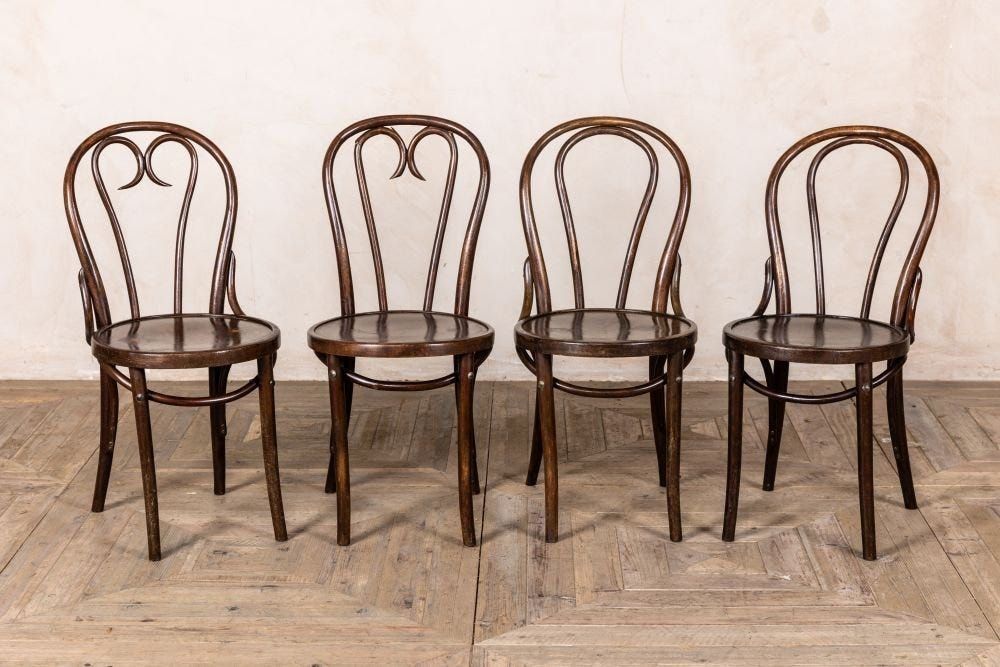
Only one of these is an actual acting tip, and even that is about making it less work for you.
Around 10-15 years ago I did improv once or twice a week for around 3-4 years. This taught me several things:
It’s about the right amount of time to be really invested in it.
The most accurate depictions of improv in wider media are, in order, a) Don’t Think Twice (dir. Mike Birbiglia, 2016) b) SE1E06 of Broad City c) the ‘improv as Scientology’ plotline in Season 2 of Bojack Horseman.
Most people will go on to use what they learn in things other than improv.
Notably, there is a lot of improv/tabletop roleplaying game crossover (even from performers who have made far more money on the West End than they ever will via improv or ttrpgs).
So here are three miscellaneous tips. This isn’t an exhaustive list by any means, but they are the things I use the most, and I was inspired by Prismatic Wasteland on Sharing the Spotlight to talk about the final tip in particular.
The OSR Lethality of Hamlet
Tell a group of beginner improvisers (or, horror of horrors, your colleagues at a team building exercise) the following “split into two teams and mime a tug of war between them”.
9 times out of 10, here’s what will happen; they will all pull on an imaginary rope… forever. Until prompted, no side will mime collapsing, stumbling over the line in the middle etc. This is because humans instinctively don’t want to lose, even when there are zero stakes and the ‘contest’ only exists because of a shared narrative.
This has a direct application to any ttrpg with high lethality, especially OSR games (horror games are easier because it’s an inherent feature of the genre).
So, here’s how to use this to pitch such a game to a player who is worried about character loss.

Actors fight over the role of Hamlet, even though Hamlet dies at the end (spoilers). Without accepting that a character may fail, may suffer a reversal of fortune and may, yes, die… there is a lack of contrast with their successes.
Moreover, just like a character may die at the end of a 30 second improv scene, the death of an rpg character is simply a reason to bring in another character from a literally infinite pool of potential PCs.
Thus, we can conclude that your character dying does not mean you are playing wrong. You are not letting down other players, and you are not failing to parse the rules. It is simply the fate of some characters.
Speaking styles, not accents
A decade of actual play streaming, videos and podcasts has put a lot of pressure on GMs to emulate professional voice actors or other performers. Now, even though I don’t play or run trad/OC 5e any more I haven’t stepped fully into ‘immersion is bullshit’ levels of indie-ness. I think there is absolutely a place for speaking in character, provided it’s something the table is comfortable with and you’re aware that invariably slows the pace of the narrative.
But what I am interested in is efficient acting. That is to say, how to get the most benefit from the least skill and effort. And that benefit isn’t just surrounding everyone in the room with a richer narrative environment, it’s practical things like differentiate NPCs from one another and making them memorable.
So, don’t worry about accents — think about the way people speak. Slow? Fast? Do they have a stutter or other verbal tic? Do they use simple language or flowery metaphors? Are they constantly referencing their faith or other beliefs? Are they snobbish or overly friendly?
What you’ll often find is that an accent of a sort develops naturally from these prompts, and it will help you memorise and build them as characters as well.
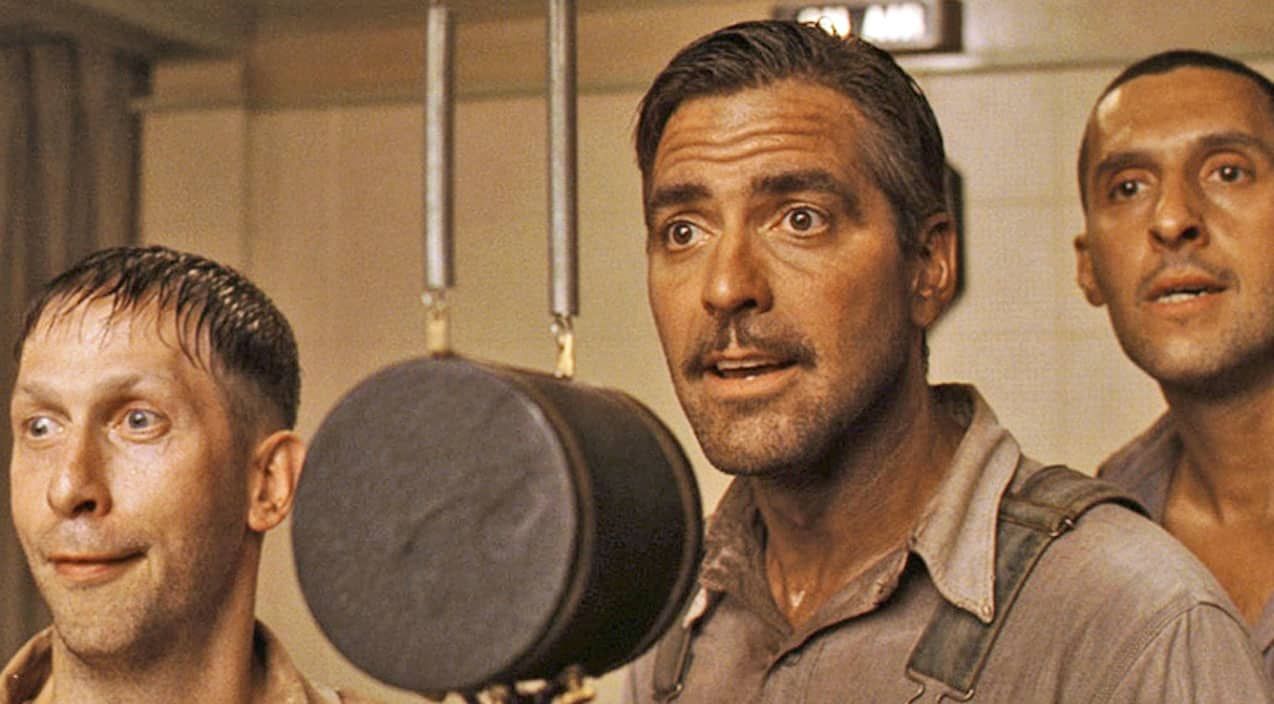
To quote a former improv teacher “every Coen brothers movie has at least half a dozen characters who speak in distinct, memorable ways and these are pretty easy to steal”
Stepping out of the Spotlight
This one is as simple as it sounds. GMs are (correctly) told to ‘share the spotlight’ between player characters, to make sure not only that the narrative doesn’t default to the most vocal player, but that the action economy doesn’t collapse in absence of a defined initiative roll or equivalent.
But if you’re the player — you can give the spotlight away.
Looking for ways to do so is a great way to help players that are unfamiliar, anxious or unengaged (within reason — don’t pile on the pressure!). And it works both in and out of combat. You can:
Rule yourself out of scenes — ‘my barbarian will play dice in the tavern while the rest of them go to the library’
Ask for help — ‘Can Grommir help distract the ogre so I can smack it in the head?’
Prompt someone to lead — ‘As a druid, I know nothing of the city streets, can Blackwing guide me to the correct alley for the deal?’
Offer help to others — ‘If I make myself big and imposing to distract them, someone else can take advantage of that’
Take a passive action — ‘I stand guard while the rest of the party examines the corpse’
Quantum Languages for Basic D&D
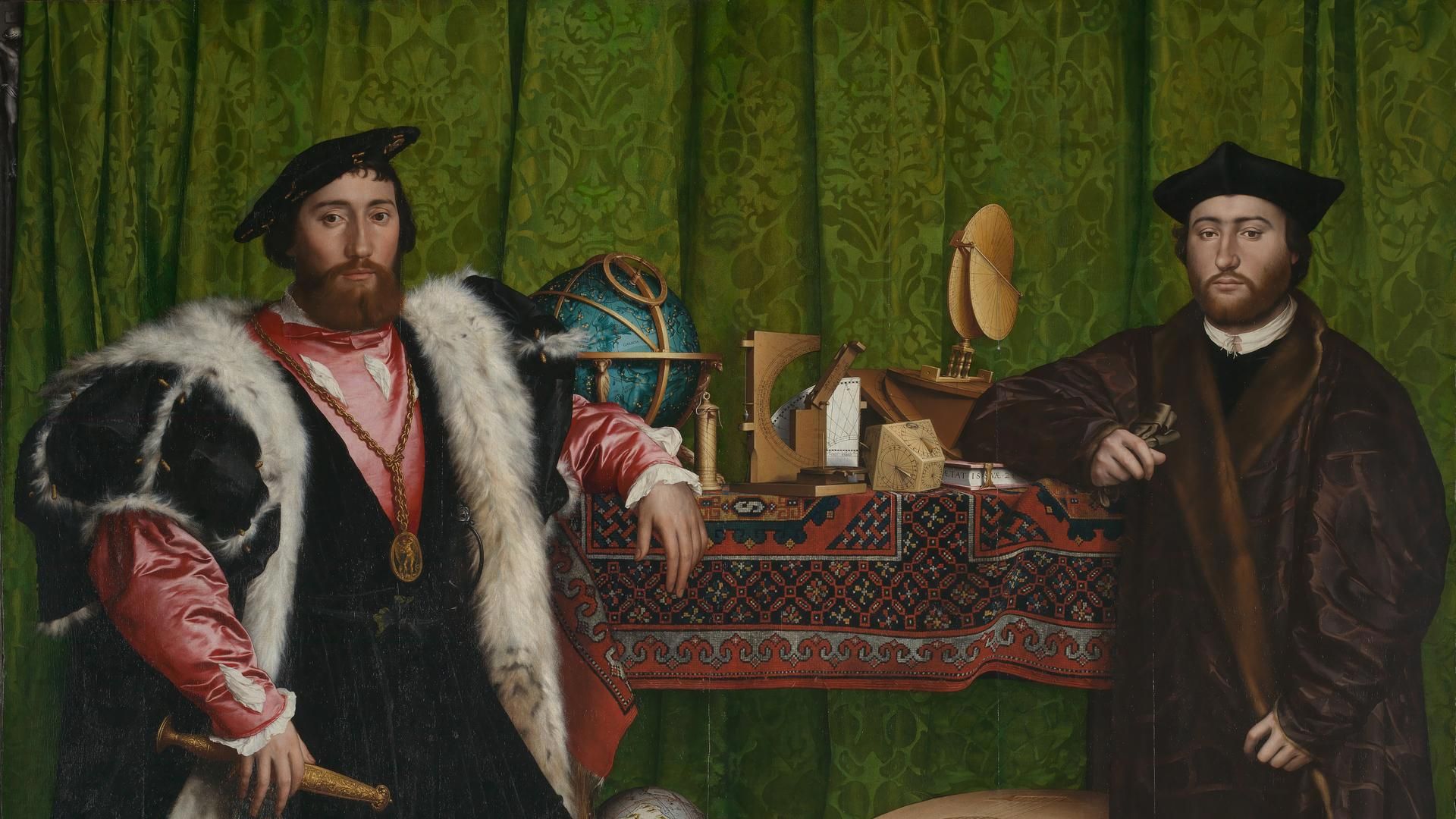
Or, testing your character’s skill as an ambassador only when there is something at stake.
As my Mothership boxset goes into cyrosleep for a few months while I work on some modules and supplementary pamphlets, it’s time to look ahead to what I’ll be running in the new year — a first playtest of a Black Wyrm/Ragged Hollow town sandbox using Old School Essentials. I absolutely should be fleshing out the treasure tables, writing some small dungeons and giving the NPCs more than Priest (Nervous).
But instead, I got distracted by languages.
More specifically, some recent Discord conversations reminded me of Prismatic Wastelands Quantum Languages (which itself references several other posts) and made me aware of Dungeonfruit’s Thirteen Tongues (Making Languages Interesting). These are both great, and I’ve previously playtested a less developed version of Prismatic’s rules in my own system.
However, we’re dealing with the strict retroclone here, the B/X, the Red Box — so how do we work something simple into that framework?
The Goal
We want something that’s easy for the players to understand and leads to interesting outcomes. Taking a little time to resolve any procedure isn’t too much of an issue, because these rules won’t be coming into play all that often. Overall, choosing to use this should be beneficial much more often than not, because we want players to both take risks and try to interact with spoken or written languages to generate a richer experience.
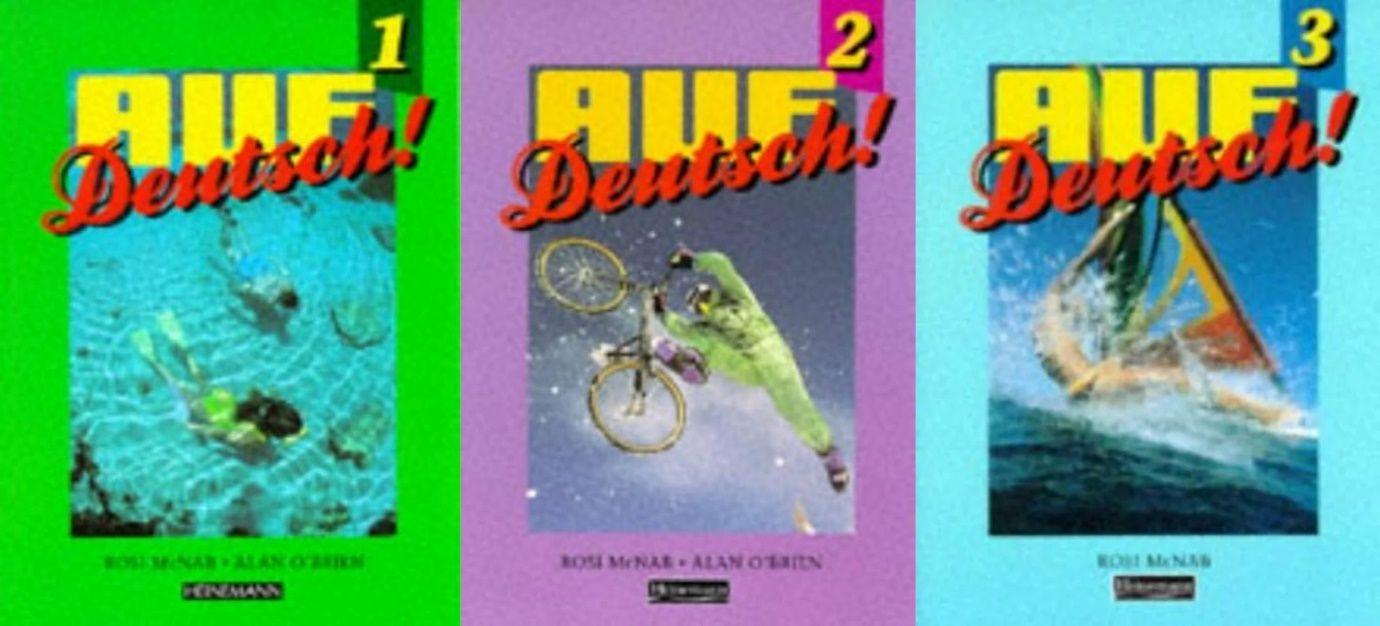
For example, my B in GCSE German means I have crossed the country via snorkelling, mountain biking and windsurfing.
So we need:
Multiple degrees of “language success” and “language difficulty”
A resolution system that provides that level of variation in outcome
Terms and conditions for when you can deploy the procedure
The Development
Interesting levels of success in languages are pretty easy to imagine; fluency grants a bonus, and lets you explain complex ideas (no need for rules around that — it’s implicit by the use of the word fluent). At the other end of the scale, miscommunication naturally gives rise to all sorts of farcical situations — even when traps are involved.
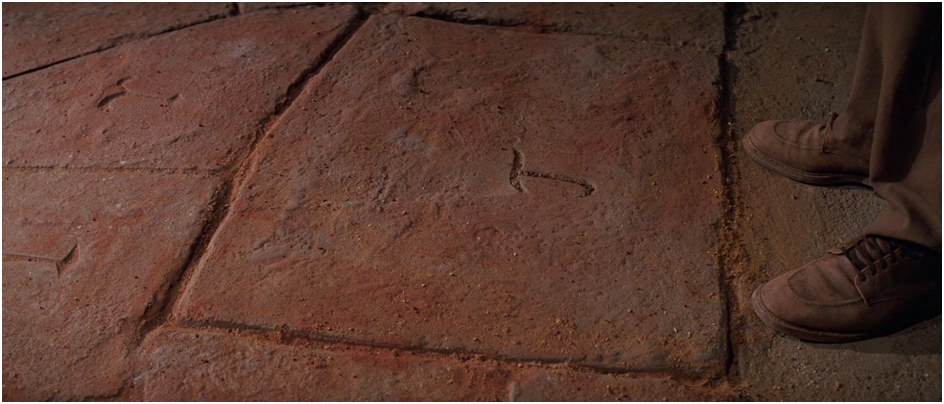
In between those two extremes, we can offer various bargains such as being able to read a language but not speak a word. And the more widely spoken or accessible a language is, the easier it is to pick up.
For resolution, we could look at a roll under ability score, but I think adapting the Reaction Roll itself (or at least the 2d6 bell curve) gives us a better representation of typical languages. You’re seldom terrible or brilliant — mostly it’s just how much effort you need to put in and how articulate your vocabulary is.
Then, the whole purpose of this procedure is that you only apply when something is actually at stake. Again, both the Reaction Roll and a classic Saving Throw are our guides here. If you hear about the Temple of the Goblin King, do our adventurers research the local Goblin dialect and customs? Of course not — they aren’t some sort of nerd, they want treasure and they don’t want anyone else to get there first.
The Procedure
Caveat: These rules assume Alignment Languages are not being used, because having essentially four languages (Common + 3 alignments) in the world renders this exercise a little pointless.
All player characters begin play knowing The Common Tongue. They also have language slots equal to 2 + their Intelligence Modifier.
Non-human races must fill a language slot with the tongue of their kin on character creation. They are automatically fluent in this language.
Characters with other languages available (e.g. Gnome for Dwarves) may fill slots with these during character creation. These are also considered fluent.
In play, a character may declare they are filling an empty language slot if:
This character has not encountered this language before.
The language is present and can be interacted with. E.g. it is available in its written or spoken form, be it via an NPC, a book, a magical recording etc.
Roll 2d6 + Charisma Modifier on the following table, also applying a further modifier for the difficulty of the language:
Easy (+1) this language is simple and widely used.
Standard (+0) used only by specific groups day to day, but follows typical structure.
Difficult (-1) obscure, unusual ways of speaking by small populations
Extremely difficult (-2) dead languages with no native speakers, the secret tongues of cults and spies.

Note: Referees may apply some discretion to both “has never encountered this language before” and the difficulty of the language. For example, if a character declares that they wish to use some downtime to study a previously encountered language, this should allow them to make a roll when they encounter it again.
d10 Emergent Transgressions
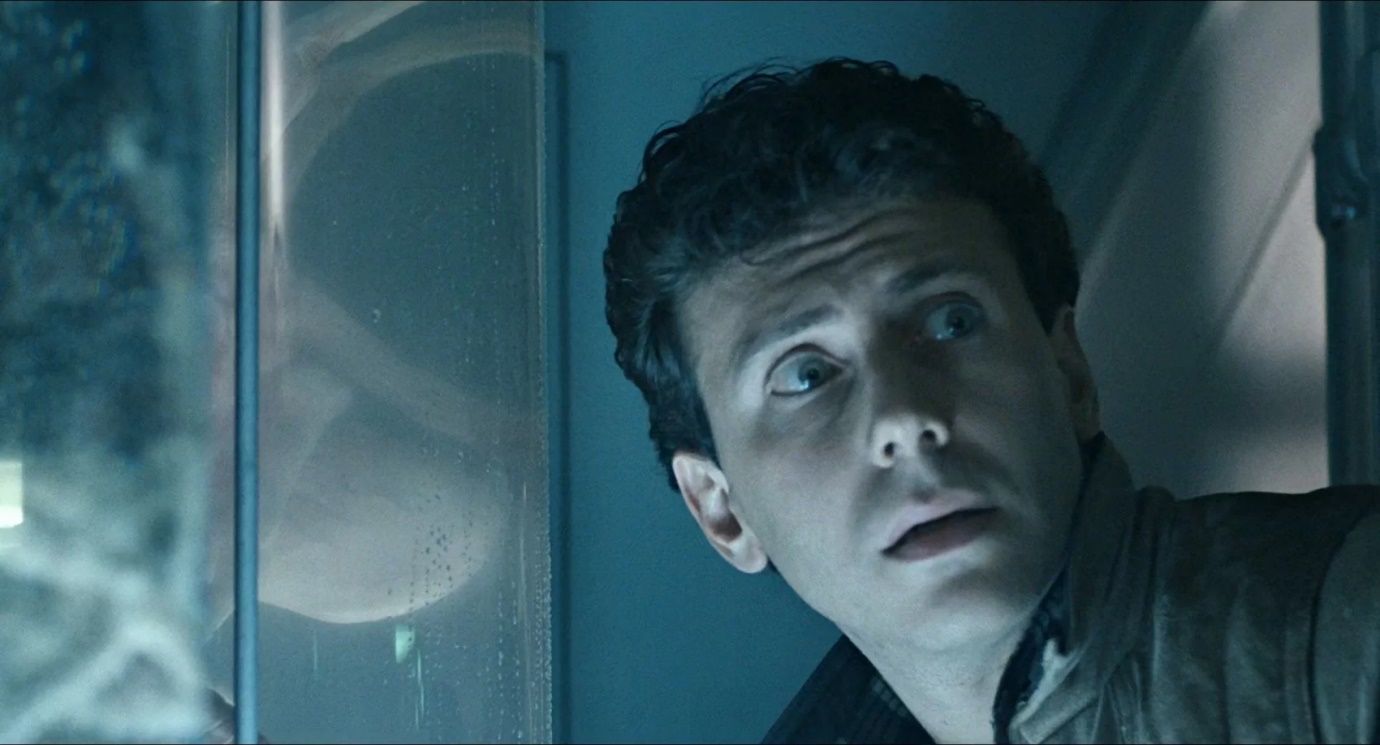
Or, giving your players a key to the TOMBS
I’m going to get the second half of the title (and the subheading) out of the way first. The Mothership Warden’s Operation Manual gives us a handy checklist called the TOMBS Cycle (Transgression, Omens, Manifestation, Banishment and Slumber), and we’re interested in the first step.
Transgression
Someone knowingly or unknowingly awakens the Horror from its slumber. Horrors occur because at some point a line was crossed that wasn’t meant to be crossed… Transgressions can be active like deciphering the runes on an ancient relic, or passive like docking at a backwater spaceport… Usually, your players only realize that they have Transgressed by the time it’s too late
The whole cycle (and the full description I’ve paraphrased above) is well worth reading. But something I’ve noticed when looking at the popular Mothership modules is that the transgression has often already occurred, and the PCs are simply either a) taking on a dangerous but thinly detailed job b) in the wrong place at the wrong time. In either case, they are not the transgressors.
And to be clear, these are both great. I have run and written modules with this exact premise (indeed Lair of the Space Lamb is THE classic OSR funnel example of b). It is extremely fitting for the game’s blue collar, corporate dystopia themes that you are caught up in events outside your control and/or have no choice but risk your life for a paycheck.
But not all crews are simple Ypsilon-14 package collectors…

(or my personal favourite fan tweak to that module - vending machine restockers)
Emergent
What if that poverty-stricken desperation led to some interesting choices? The players are already vulnerable to temptation, all they need is something to tempt them. You could dangle risky opportunities in front of them, but I think that stumbles a little in Mothership because every job is so risky. So my approach is objects. After all, is it not the Xenomorph egg that birthed this genre? There’s even an example in the Player’s Survival Guide.
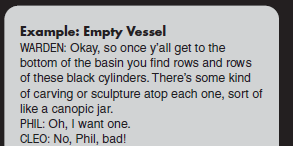
Note however, that this example of play (p.36 by the way) gives the players immediate consequences for that action during the module. Again, this is probably the most common approach - it’s the premise behind (very good) modules like Iron Tomb for example.
But here’s where the emergent comes in. If we’re in a campaign, we want the player’s actions to create problems over time and have them combine with other modules and other player choices in unexpected and delightful ways.
Building your Objects
There are two main sources of OSR inspiration here:
Cursed Magic Items. An object that provides a rare or unique benefit, but comes with a price that may range from inconvenient to fatal.
Complicated Treasure. An object with no utility except tremendous value, but which is difficult to own, transport and/or sell. (Something I’ve already written about)
Temptation can therefore be either because it’s useful, valuable or both. The “price” can be from the risk of the object itself and/or how the wider world reacts to you owning it. And the transgression may be simply the passage of time, using it (or using it too much, in defiance of a moral code etc) or other groups become aware of it.

Do not transgress it after midnight
I have put 10 examples below, but first…
A Note on Guilt
To what extent do we want our horror tabletop rpg characters to be responsible for their downfall? There is of course no correct answer, but you can generate some interesting shifts in the tone of a campaign this way. The arc of victim of circumstance > greed > downfall is an interesting one to play out. Note that this can result in player conflict so be prepared to discuss that appropriately out of character.
But what an amazing character exit, eh? Risking everyone else when you try to make a profit, pitching the remaining PCs (and the new one you’ve just rolled up) into an entirely emergent scenario.
d10 Emergent Transgressions
Just an ordinary rucksack full of expensive (100kcr) drugs. However, the handover has to take place on an abandoned station, to make it easy to check you aren’t being tailed or scanned from a distance.
Some spotlessly clean stimpacks with colourful but blurry packaging, similar to one of the major medical corps. You’d have probably died without it, but now you feel strange. As if whatever copied this item didn’t fully understand what it was meant to do.
A rugged and reliable smart gun. It has a personality. It will tell you whether this target deserves it. If not, it will suggest others.
Keycard (Red). Comes with co-ordinates to the long lost ‘Phobos Hanger’. It also disables the sentry guns on the approach, allowing you to fly straight in - whoever created the cards needs an intact ship to escape in.
Alien art statue (250kcr), like a swarm of bees frozen in liquid nitrogen. It evokes nothing in you, but collectors have been known to kill for it, sometimes while the auction is still in progress.
Ship cloaking module - impossible to buy on the open market. When you use it there are shadowy figures in previously empty cyro tubes.
Synthetic spaniel, very loyal. Immortal, desired by many, wails mournfully if not walked.
Malthusian model C food dispenser (discontinued). Quadratically duplicates food and drink offered up to it. The off switch is unreliable.
A coupon good for one job undertaken by Sirius T Xanex, eminent bounty hunter. Using Sirius will only encourage factions in this sector to militarise further. Your subsequent jobs may have more obstacles.
Android spare parts, enough to heal wounds and even replace missing limbs or digits. They were taken from condemned androids who turned against their masters. These robot hands will kill again.
How I run Mothership One-Shots
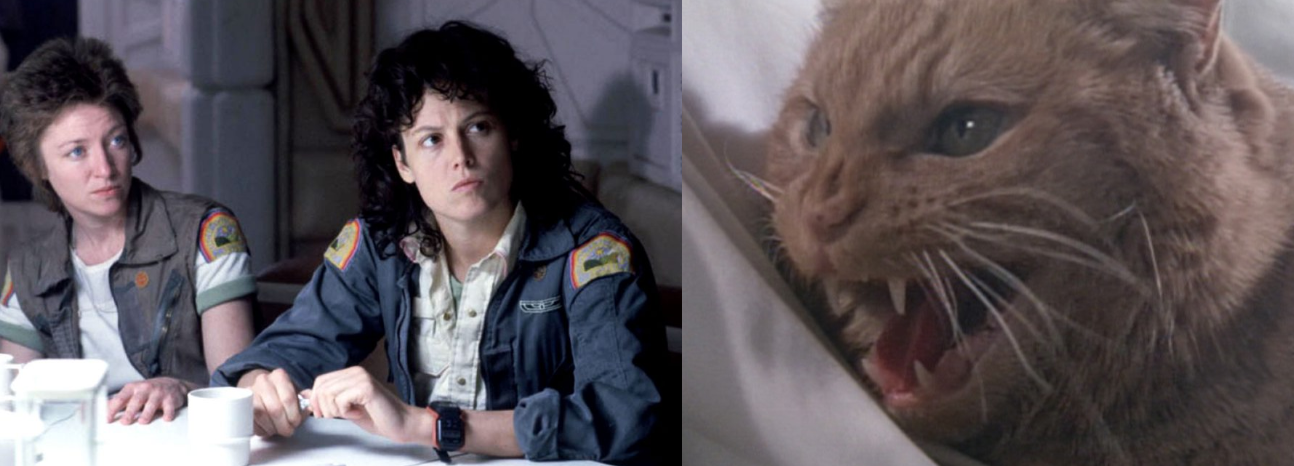
Or, making your player characters more Ripley and less Jonesy.
I’ve had a Mothership-heavy few months; finishing up my campaign (which started with Lair of the Space Lamb) then running a couple of playtests for a module I’ve written. I’ve also watched both Alien and Aliens for the first time in a decade, as my wife wasn’t sure if she had ever seen them (she had not, prompting the memorable line, shortly before Ash’s betrayal, “is Bilbo an alien!?”)
The second of the playtests was at a mini-convention here in Bristol for the Apocalypse Players podcast, thus casting me as the lone Mothership Warden in a Deep One-infested sea of Call of Cthulhu Keepers. I had three players, all very keen to try out a game they had heard about but not had a chance to play.
And then something interesting happened. I got one of their characters to 20 stress.
This is the first time I’ve done this in a one-shot, and it was achieved without using any optional rules (more on those later).
So I thought I would write up how I ran the game, how I frame one-shots in general, and why I think it delivers a good player experience. There’s also some parts about how my thinking on Mothership has evolved since I started using the 1e beta pdfs early in 2023.
Tweaking the Loadout
The only choice you make in Mothership character creation is selecting 1-4 skills depending on your class, and you don’t see a huge amount of stat or save variation outside of class bonuses due to the 2d10 bell curve.
This leaves us with equipment, where I agree with the WOM (Warden’s Operations Manual), to whit:
Rolling random Loadouts helps reduce shopping time before a game begins, and also creates a situation where players don’t have everything they need at hand and must work together.
But I think the actual Loadout tables in the PSG (Player’s Survival
Guide) are too variable to fully support this. The aim, at least to me,
is that everyone ends up with a few different things, of which some are
obviously useful, some are weaker/less applicable than you would like,
and some appear (at first glance) to be completely useless. The PSG
provides entries like these:

Highly variable, but also 1. We aren’t giving the marine anything more than a gun and some armour. 2. The person who rolls ‘well’ has nothing to readily give/lend the person who rolls ‘poorly’ to balance things out. I do understand that these results imply something about the character’s circumstances and background - but we have the trinket and patch tables for that (and they’re great - always roll on them!).
I’ve experimented with a deck of equipment cards in the past (which made for a fun one-shot of Screaming on the Alexis, as I woke them up from cryosleep and sent them scavenging) but my most recent approach is just to create a new series of tables for everyone to roll on that is tailored to the module at hand. For example, for my playtest:
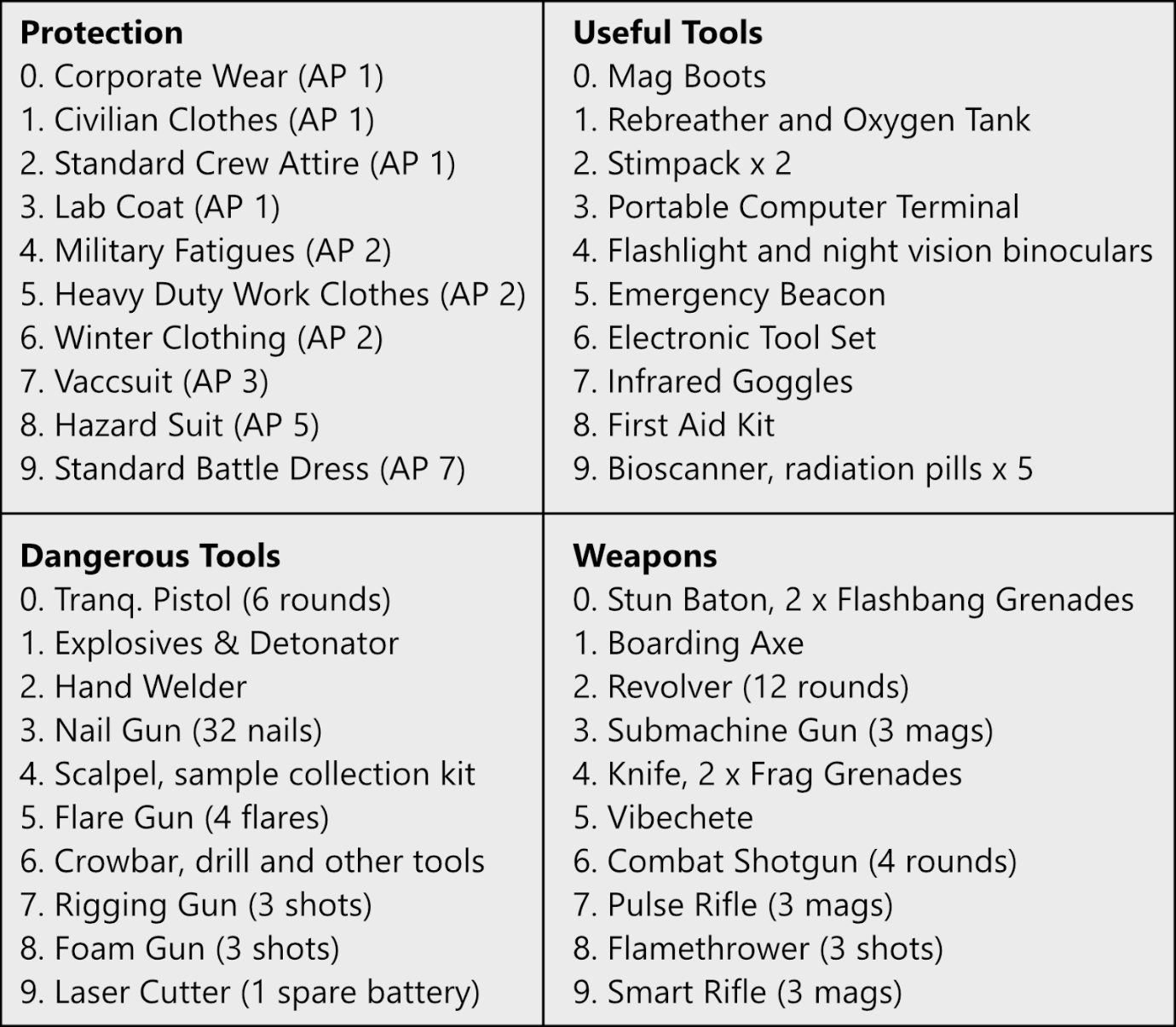
You can have everyone roll once on each table, or mix it up to give 4 rolls in total. If you want less powerful PCs, limit the number of rolls or roll 1d5 instead. Almost certainly needs further refinement - but the idea is to give them a few things they can start thinking about how to use, ask questions about, describe for their character’s appearance etc.
And all that gear? It just might make them overconfident…
Establishing Questions
– Did you ever ship out with Ash before?
– I went out five times with another science officer. They replaced him two days before we left Thedus with Ash. Hm?
– I don’t trust him.
– Well, I don’t trust anybody.
Something that Quinns Smith mentioned in both his Youtube review and interview on the Bastionland podcast was the lack of rules or guidance around bonds/relationships for PCs. In a campaign (where the WOM section on framing/prepping is very good), these might emerge over time and/or be determined in Session 0*, but for a one-shot we need a shortcut.
Enter Trophy Dark and Jason Cordova’s blogpost about Establishing Questions
I won’t repeat what’s written there, only to say that the first section (General Establishing Questions) is particularly appropriate. We, as the Warden, know what module we’ll be running in advance but not the specific player characters that will be involved (unless you’re using pre-gens, which I’ll talk about below). Thus, for Haunting of Ypsilon-14, we might go around the table and ask:
Who do you know onboard the mining base? (You can then easily amend one of the existing NPCs)
What’s something you always do as soon as you aren’t cooped up inside the ship? (Hopefully someone will check out the shower)
What spare parts does the ship need that might be ‘lying around’ in a mine? (this could even be a reason to delay their departure)
Why do you care that there’s a research vessel docked in the other landing bay? (very open-ended this one, but your players can often surprise you!)
When have you promised your friends or family that you’ll be back from this job? (sentimental yes, but helps underline the blue-collar themes of the module)
There’s a couple of other tools that I’ve used but bring out only in specific circumstances:
Pre-generated Characters. I did use these at the convention (but made two of each class) just to save as much time as possible but generally I prefer people to generate their characters. The sheet makes it so straightforward and it helps teach new players that it’s not the end of the world if a character is lost.
Secret Agendas. I prefer these to emerge out of the Establishing Questions - partly because it lets me check in with the players about the concept but mostly because players will be much more invested in agendas they think of themselves and pass across to me on a scrap of paper.
So give them some stakes and goals. Build those little inter-PC rivalries and status games. It only takes 5-10 minutes but absolutely pays off when they’re making tough decisions 2 hours later.
(*Something I’d like to write or have someone else write for Mothership is a “Session #0 Standard Operating Procedure”. You could present it as an in-game document in a manner similar to Breach of Contract and also include some lines and veils as well as a ‘what is an Android?’ section)
ABS. Always Be Saving.
Space is deadly. You just won’t believe how vastly, hugely, mind-bogglingly deadly it is. I mean, you may think it’s deadly to jump in the hippo enclosure and try to steal Moo Deng, but that’s just peanuts to space.
(With apologies to Douglas Adams)
Pages 22-23 and 32-33 of the WOM talk a lot about rolling dice, they say things like:
Roll as little as possible.
What the player wants to do, they usually just do. Opening doors, talking to people, even violent actions like attacking someone, often won’t require a roll.
You typically only roll dice when it is both unclear what would happen and the stakes are high. Tell them they can think of their Stats and Saves as a measure of how good they are when unprepared and under extreme pressure.
Avoid rolling: 1. When the stakes are low. 2. When it’s obvious what would happen. 3. When they have the right tool. 4. When they have a good plan.
Now, as a former 5e DM and member of perception-rollers anonymous I think this is really good advice.
Well, I think it’s really good advice for stats + skills.
But saves… saves are a little different. And the reasons are partly thematic and partly because of the game engine.
Saves get less attention in both the PSG and the WOM. And I think some of what is said above with respect to rolls applies primarily, or even exclusively to stat checks specifically. For example, page 33 of the WOM gives us a whole table of (really good) examples of how failing a roll can advance the shared narrative in lots of different ways other than “the intended action doesn’t happen” - but all twelve examples are stat checks.
On saves, we’re told:
You have three Saves which represent your ability to withstand different kinds of trauma.
Saves are reactions, rolled to avoid different mental, emotional, and physical dangers.
However, with the main source of involuntary PC behaviour actually being the Panic Check, sanity and fear saves in particular are often just a roll to avoid gaining stress. And honestly? It totally works in my experience. We don’t need Sanity Saves to give us the sudden swings of madness you get in Call of Cthulhu for example - where Mothership excels is the steady ticking up of stress, the small roleplay moments from a failed save (new players really take to this in my experience). You can still get an unexpected panic check from a critical failure after all.
That quote I butchered above? It’s to show that unlike stat checks, rolling lots of saves in a Mothership one shot is entirely thematically appropriate. These characters are having the worst day of their entire lives. It’s not like you make one Fear save against the killer robots and if you pass you’re never afraid of them again. The swirling strobe patterns on the vidscreens aren’t meaningfully less insanity-inducing the second time they appear.
And also… the game works better once the PCs are at like, 6 stress or so. It just does.
At that point, you have a 30% chance of failing a panic check AND the results on the table become more interesting. To get the really dramatic ones like Doomed or Catatonic you need 10 or 15 stress respectively. These are the results that have pivoted the entire narrative of one shots for me in the past - you want them to be an emergent possibility!
I should note that page 8 of Another Bug Hunt suggests PCs gaining 1d5 stress on a failure for a one shot, and the PSG mentions that it’s sometimes appropriate to give out stress irrespective of a roll. Both of these work to accomplish the goal of a higher stress gain - I’m just happy to have my players rolling saves more often.
So use those saves to build stress and emphasise just how bad this world is. Attach saves to evocative descriptions of sights and sounds, to moments of narrative revelation. Give the tension of the stress mechanic a chance to prove itself when a critical failure is rolled later on.
But what does this have to do with Alien (1979)?
“Cats will amusingly tolerate humans only until someone comes up with a tin opener that can be operated with a paw.”
― Terry Pratchett, Men at Arms
Jones the cat serves mostly as a way to get the human characters into trouble. He possesses little in the way of specialist skills, and the affection the crew have for him is seldom reciprocated. He doesn’t drive the action, and ends the film much as he began it.
We don’t want that from our PCs. We want a Mothership one-shot to produce one or more Ripleys, characters that:
Engage with their surroundings using both intelligence and curiosity
Are seen to be psychologically impacted by events that unfold
Have varied (and tested) relationships with those around them
Use a variety of equipment at key moments
So go forth and make those Ripleys - and give every PC the opportunity to become one. Establish their stakes in the world of tonight’s one shot, give them an assortment of tools to play with beyond their bare hands and let them get stressed. They will reward you with their own secret agendas, desperate gambles for wealth and survival, risky plans and heroic rescues.
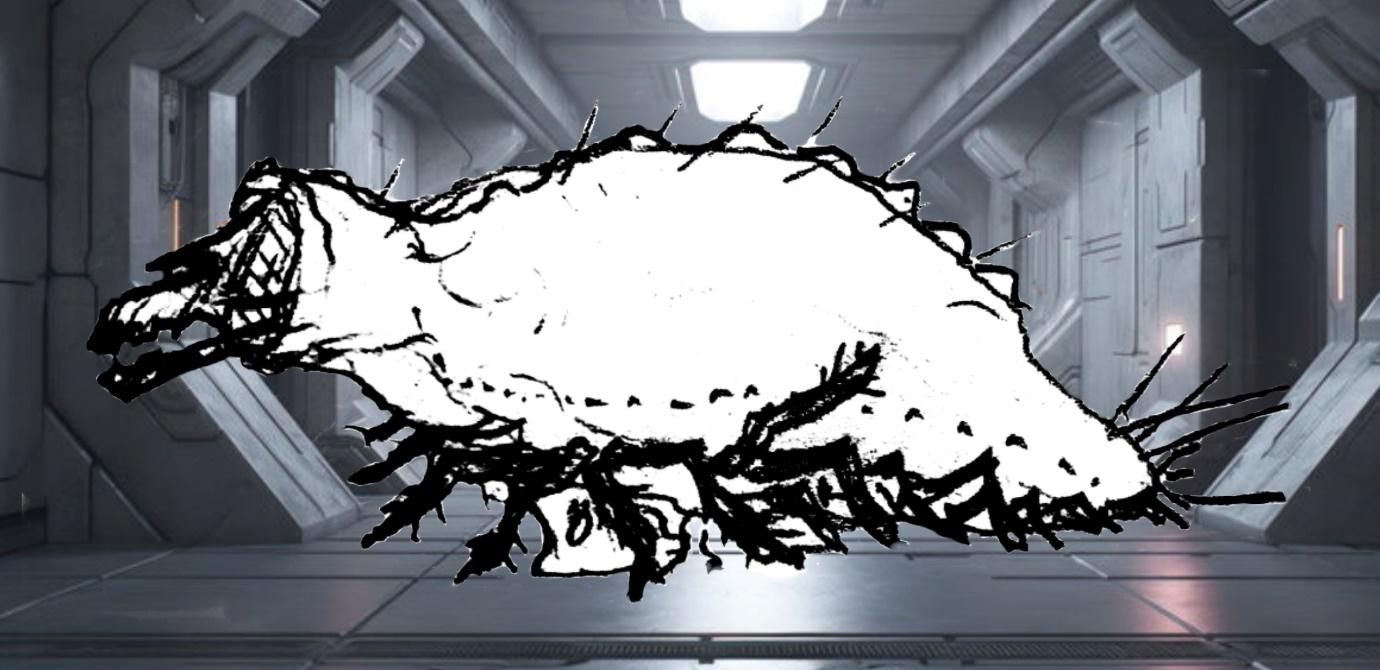
Lair of the Space Lamb
What do you do if you want to run Arnold Kemp’s Lair of the Lamb, but you have a Mothership campaign planned for when the physical boxset arrives?
Perhaps the Lamb is somewhere new, somewhere beyond the stars.
(Note: A quick search of the Mothership Discord confirmed at least 2 people have already had this idea and run it successfully)
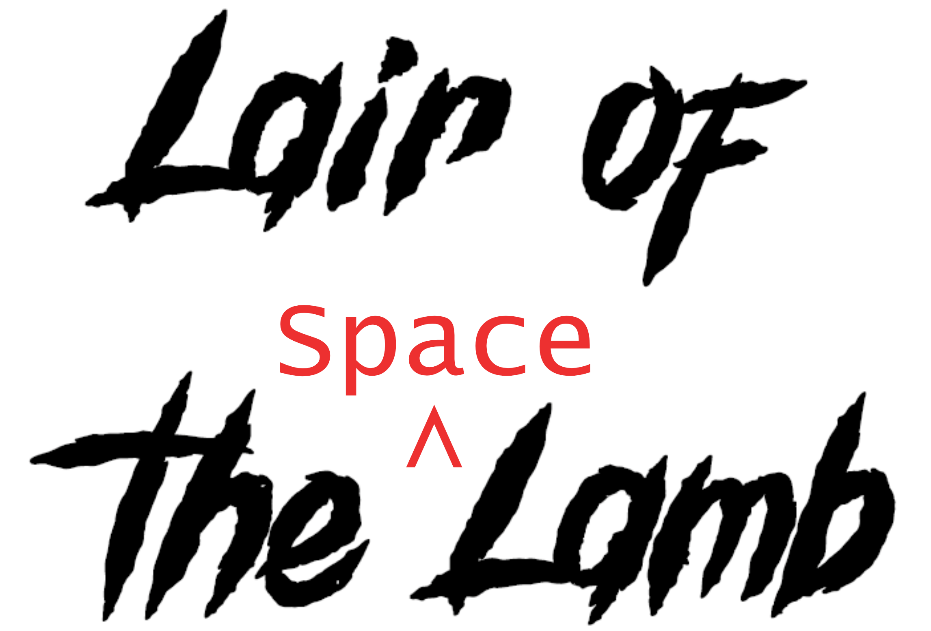
The Concept
Naturally, spoilers abound for the adventure (free via the link above).
This would still be a funnel, in an appropriately sci-fi environment. Items and traps would be converted based on what makes sense in the fiction, with a nod towards the mechanical drivers of play in this scenario (e.g. light being precious).
This is only a conversion of the first level of the dungeon. Eliminating the ghouls keeps things shorter (I have lots of other Mothership adventures I want to run!) and means I don’t have to try and rationalise their existence in a sci-fi setting.
I also wanted to incorporate some of Arnold’s proposed changes to the adventure from a recent AMA on the NSR Discord (will put up the link when it’s compiled). To whit:
-
Remove the initial door and replace it with an elevator
-
Give a hint about the drip-drip water puzzle
-
Make the spiders non-venomous
-
Give Akina more personality/goals
-
Make the Lamb harder to kill
Then there were the Mothership (or at least, the way I run Mothership) considerations:
-
The Lamb and its… produce are the only things here that defy rational explanation (I want to go elsewhere in the sector for other adventures rather than tie everything back to the temple and its artifacts).
-
There should be lots of opportunity for panic and injury.
-
Whilst money and treasure aren’t as important as in classic OSR gold-for-XP games, they’re still useful to trade with and as a lure.
The Set-up
The free city of Lon Barago, jewel of the plains, becomes:
Lon Barago
Size/Type: Asteroid settlement, B-Class Port (2d10 x 1kcr to convert 1d10 stress)
Equipment Availability: All mundane equipment, advanced weapons/tech are rarer — may require extra cost or time
Cultural Touchstones: The Belter settlements from The Expanse, WH40k Hive Cities
200,000 people (as per the last census, now out of date) crammed into a large asteroid (Barago, with “Lon” indicating its central significance). Barago itself is now mostly mined out, with satellite mining operations now taking place throughout the belt.
Hot, humid and cramped. The populace typically resents the corporations that jockey for control of the valuable top layer (with its docking bays, landing pads and taxation rights). No singular entity can claim to have majority control however.
Within this environment, religions and cults develop, feud and merge on a frequent basis.
And for our unlucky funnel fodder, the framing is:
Even if you are from Lon Barago/The Epsilon sector, you do not receive the protection of the citizens here. Perhaps you are an outcast of some kind, your family fell from favour or you are seen as a collaborator. Otherwise, you are an outsider — either in corporate employ/association or a rare independent traveller.
“What is the last thing you remember before you woke up here?”
I also created a d100 table to generate faction alignment, class and career. Players were free to use as much or as little of this as they wished. A sector map (based on the guidelines in the Warden’s Operation Manual) gave them some additional context.
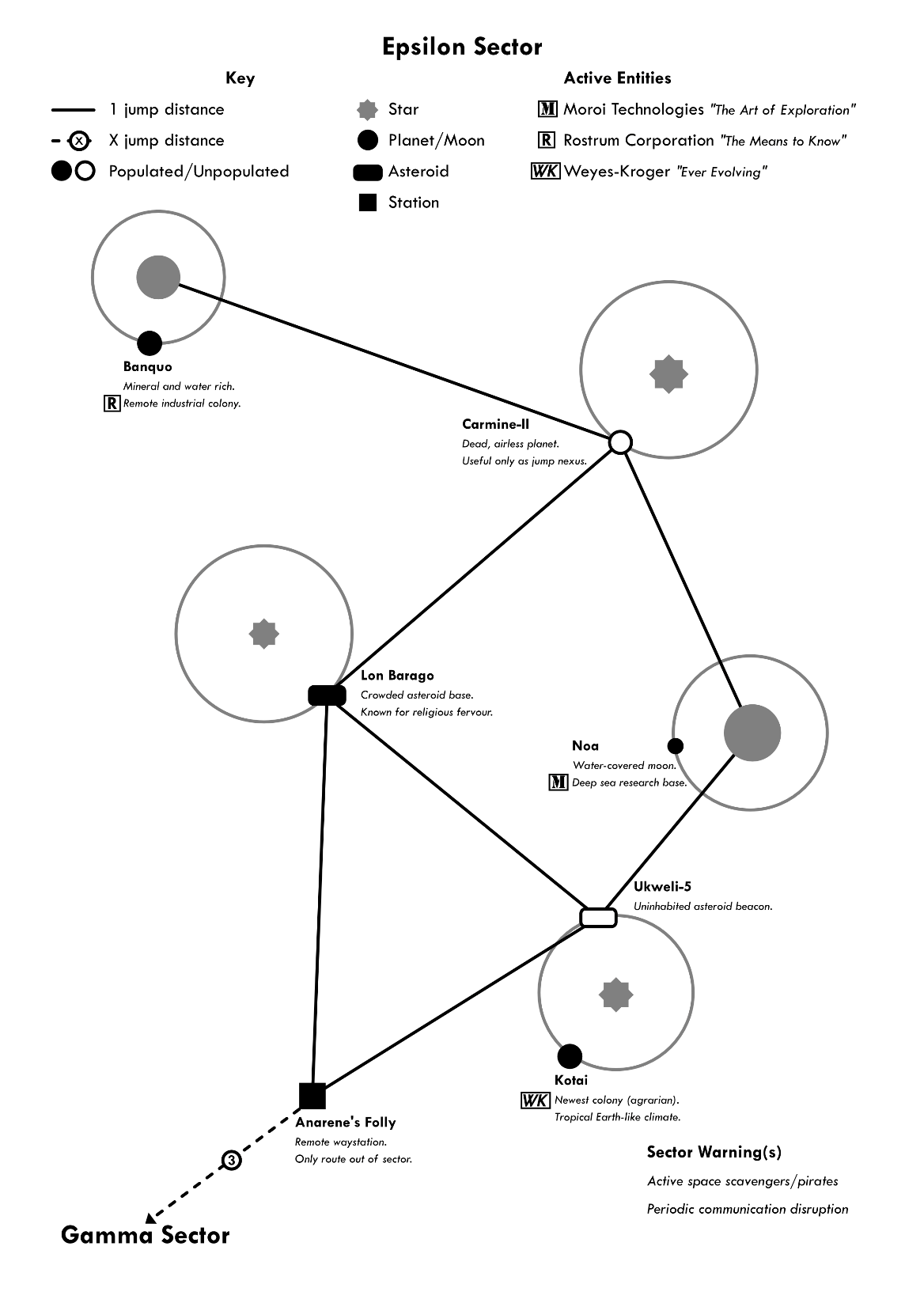
I described the lair as a mine that has been repurposed for living (or at least, industry/storage) and shows signs of multiple decades of use. The occasional sign of bare asteroid rock but mostly concrete floors and walls. Occasional metal beams, pillars or panels but noting useful unless noting. The air is not completely stagnant, but any hint of where it is being pumped from is lost in the constant background hum that is omnipresent on Lon Barago.
The Lamb and other Creatures
The Lamb: C:65 4d10 DMG I:50 AP:0 W:3 (30)
Special: Damage reduction 3 vs. unpowered melee weapons
I used the ‘Brute’ statblock from the back cover of Unconfirmed Contact
Reports, bumping up the instinct to reflect the Lamb’s intelligence and
that the lair has been its home for some time. The damage reduction is
to reflect the ‘as chain’ armour — it should be very hard to kill with
purely improvised weapons.
“But the Lamb should kill you in one hit” — 4d10 could still potentially kill a low HP Teamster or Scientist in one hit, but most PCs will go down with two hits, after taking a cool wound (I really like the Mothership wound tables).
Everything else about it works pretty much as intended.
Little Lamb: C:45 2d10 DMG I:30 AP:3 W:2 (20)
Father Bastoval: C:60 I:60 AP:3 W:3 (15)
Inventory: Camera drone w/ night vision. Ceremonial trident (2d10 DMG). 2 x stimpack, Web grenade (produces a sticky burst that slows movement)
Milo/Bilosh: C:40 I:40 AP:5 W:2 (15)
Milio carries a SMG and Bilosh has a Stun Baton
Doors
“Locked wooden doors” become thin metal and plastic doors secured with a keypad lock. A strength check lets you kicked or otherwise break the lock and open the door in a negligible time, otherwise it takes 10 minutes to force it. Either way, it makes noise.
Access to tools to pry off the keypad and bypass the electronics with another power source will let you attempt to open the lock quietly (either Hacking or Mechanical Repair are applicable).
Steel doors cannot be kicked in, you need a blowtorch at the very least, preferably a plasma cutter.
Rooms 1-5
As per the Mothership rules, since all PCs are dehydrated they have disadvantage on all rolls.
1. The ‘bowls’ become metal-lined pits in the floor, original purpose unknown (a little like service pits for a large vehicle or access hatches for underground piping/cabling).
2. Instead of bells we have electronic ‘noise makers’ which will chime if moved too fast. Since overt harm to animals was one of this campaign’s lines, we have 3 goat carcasses strung from a ceiling beam. A metal bowl, hay and copious bloodstains suggest they were slaughtered in this room.
3. Unchanged
4. Purple lotus powder is unchanged.
The chest is now marked ‘secure magnetic containment pod’ — removing the first lock causes a warning beeping noise (think a videogame grenade/landmine), removing the second creates a bright flash of light and smell of ozone.
It contains the head of an experimental android (Unit-XC). It will attempt to absorb synthetic skin from any nearby androids (body save to avoid). If there are none available, with an hour of downtime it can reconstruct itself to move using the fragments of wires and structure protruding from its neck as tiny legs.
In this form, it can latch onto humans or androids (usually on their shoulder) and turn them into a thrall. Thralls are still playable characters, but their overriding focus is recovering the remaining parts of Unit-XC.
Removing Units-XC’s head without a full surgical suite risks 6d10 damage (reduced to 4d10 by a Success/2d10 on a Critical Success on an appropriate skill check).
5. Heavy steel elevator doors (no keypad). A battery powered lamp is hanging on the end of a metal pole, recharging via crude wiring. It lasts for 1 hour if removed and takes 1 hour to recharge. There are some pieces of wire on top of the locked metal storage box (to allow PCs to rig up charging elsewhere). Inside the box is another lamp and spare chemical battery. The chemicals in the battery are flammable, provided you open or break the battery to release them.
5a. The broom is now a mop with an aluminium handle.
Rooms 6-10
6. The acid deals 2d10 damage per round until rinsed or wiped off.
Note: I actually let this trap trigger repeatedly, in case the PCs wanted to lure something into it (of course, it doesn’t work on the Lamb, but they don’t know that). If for some reason they want to empty it of acid, it works 1d5 times.
Rather than a statue, there is a mural of a fish with hands, that has been defaced (rather than Vandoh, I’ve altered the canon such that the fish with hands was an earlier cult who occupied this space, see rooms 7 and 14 below).
7. The door cannot be closed from the inside. Room resembles a dentist’s office completely covered in grime and filth, complete with chair/throne in the centre.
Golden helmet worth 1.5kcr
3 x Elaborate ‘fish with arms’ religious vestments/costumes (bulky, flammable)
If a PC sits on the chair a rapid-acting nerve block is injected, and surgical arms descend from the ceiling. The left arm of the PC is replaced with a crude hydraulic claw below the elbow. Make a body save; on a success, it is fully functional (as boarding axe in combat, stronger than human hand). On a failure, it is damaged or otherwise not fully integrated (d10 damage, no strength benefit). The surgical unit only works once.
A recorded message intones “as the great fish evolved, so shall we”
The PCs can deduce the function of the chair, but only by spending 20 minutes clearing through all the grime and filth to reveal rotting paperwork, laminated signs etc.
8. Akina’s ring is non-magical but worth 2kcr.
Akina still very much wants to be rescued, but is not above siding with the priests if she believes they will kill the PCs. Has seen the life within the Lamb, and will appoint herself ‘Guardian of the Little Lambs’ in the event of a power vacuum.
9. Replace haunting with:
The concrete that projects out over the water is cracked and broken with rusting rebar visible in places. If 3 or more PCs stand at the edge at one time (such as if they are in desperate need of water) a section will collapse beneath one of them (50% chance that their clothing catches on the descending debris). The lamb travels here often and knows to enter/exit the water from the side.
For the water drip puzzle, I firstly changed the fountain to a malfunctioning pump, then placed another ‘acid pump’ next to it with a sparking (1-2-1-2) control panel. Plus another mural of a fish with arms.
10. Battered shield = discarded access panel with handles, AP3 if held in melee
Spear = sharp broken plastic rod, d10 DMG (adjacent), requires both hands to wield effectively
Torch = battery lamp (40mins light, not compatible with other lamps previously mentioned)
Bottle of liquid hole = cannister of hyper-cooled liquid nitrogen, weakens things it is sprayed on, but you’ll need additional force/cutting to fully break them. Damaging if swallowed, but the cannister may not break immediately.

Rooms 11-15
11. Unchanged (amusingly this makes the rat a very valuable piece of treasure if you can fully befriend it, given the cost of real pets in Mothership)
12. The roof is held up by a Legenga ™ Temporary Plastic Support Block Stack. Collapsing it on the Lamb inflicts 1 wound to it (don’t roll on the wound table — treat the ‘vulnerable whilst digging itself out’ as equivalent to this).
13. Unchanged.
14. Battery lamp hanging on the wall.
Inscription reads “Shadrakul, who showed us how life could change”
The sarcophagus does not open when you take anything from the pit below, it will need to be forced open or reset by filling it with debris.
14a. A desiccated corpse holds a glass prize for biochemistry (800cr), 3 x fear gas grenades and some cryptic notes that explain their purpose (requires 1 hours downtime to fully understand — also reveals the door code to room 7).
Fear Gas Grenades: Make a fear save or flee in terror for 1d10 rounds (still works on the Lamb, but rolling its instinct gives it a 50% chance of saving).
15. 1 spider bite causes muteness for 1d10 x 5 minutes. Each subsequent bite reduces your body save by 1d5 (death at 0 body save).
Danjo the reconstituted Weyes-Kroger Chicken substrate (now with Real Flavour) salesperson is calling out to the market on Level 8a. He has 1 knife, 3 x 20 minute batteries and assorted food packs.
Rooms 16-20
16. Unchanged
17. Unchanged (altars still have candles in the future!)
18. The shattered gazebo can now be accurately described as a fallen elevator.
18a. The portcullis becomes an old-timey concertina elevator door (diamond grid). The sword is a boarding axe and the bow + arrows are a SMG with two clips of ammo.
19. The east door no longer exists (Ghoul level eliminated) so the iron spikes are steel wedges holding the entry door closed (it can still be broken open).
+2 minimum stress if you are forcibly removed from a pool
The priests throw psychotropic urine at you in lieu of spells.
20. Vandress isn’t magical but she is mutated. Without cone of mutiliation/confusion she will spit acid (3d10 DMG, area effect) or cough spores on you (sanity save or act randomly).
Rooms 44-46
Note: Since there is no level 2, I didn’t make the tunnel from the fountain to the cistern quite as hidden or underwater — it’s just distant from the fountain platform (i.e. you can only see it if you fully explore the fountain with a light source).
44. A large water intake leads to a pump sending water up to the temple. If you manage to get the Lamb sucked into the pump you kill it and contaminate the temple’s water supply.
45. Rigid plastic boat with 2 batteries. 16 plastic water barrels.
46a/b. Unchanged. Rather than a tower, you can drop through a vent to freedom.
The Play Report
Stumbling around in the dark, the PCs were extremely lucky to have the Lamb attack the one PC with a knife, who then rolled exceptionally well to escape (and I rolled low enough that they barely avoided a wound). More exploration followed (not yet tackling the locked door to 4) and a spray of acid was likewise lucky not to take out a different PC.
Reaching the water (after seeing but choosing not to speak to Akina, who likewise was unsure of their intentions) they drank a little before the Lamb emerged from the water. Remarkably, everyone passed the resulting fear save as they saw it in the light for the first time.
Fleeing from the lamb, they hurl the gong into the pit in order to distract it, and continue their exploration. At this point, the lamp starts to flicker, and they elect to have two PCs start to search the bone pellet pile whilst the other two return to the elevator to recharge it. Feeling around in the dark, only one character is able to find the tunnel at the back and escape into it, whilst the other is grabbed and eaten by the returning Lamb. The two lamp-bearers (both marines) return to witness this and immediately panic, fleeing to the various mural rooms. Meanwhile, the scientist crawls through the tunnel and is relieved to find another lamp at the far end. We introduce a new PC (teamster) as the victim freed earlier.
Eventually, the group comes back together, correctly identifying that they have found a loop in the dungeon and a potential trap in the form of the weakened roof. Avoiding the spider-filled wall crack, further exploration reveals the weapons and rope on the ledge above the broken elevator (helped by some very good rolls for climbing). With these they feel emboldened enough to break down the NE door, finding the priests and interrogating Vandress before murdering her (and having some acid spat on them in the process).
Another encounter with the Lamb sees them wound it with sub-machine gun fire, but both sides retreat as the gun-toting marine is hurled against the wall, fracturing his skull (disadvantage on all rolls). Dragging him away, and now with the lamb licking its wounds, they break down the door in the SW and unpack Unit-XC. Unsure what the purpose (or indeed threat) of an android head is, they wire it to the lighting circuit by the elevator in the hope of getting information. Now with a decent collection of items, they head to the crack and smash a battery to burn out the spiders. Venturing inside and meeting Danjo, the scientist opts not to trade for items, instead saying “tell the priests of the white temple we’re already killed Vandress and we shall kill the Lamb if they do not let us out — they have one hour”. Returning to the elevator, they realise that Unit-XC’s head is gone.
Two PCs went to rescue Akina, whilst two others went to rescue more survivors. The latter discovered Unit-XC had drafted itself to a captured android back in the starting room, and it was requesting everyone else to serve it. With everyone reconvening by the main elevator, Unit-XC’s attempts to call it were interrupted by the Lamb, who tore the arm off one PC and consumed them as they attempted to slip past. At this point, Unit-XC commanding all the remaining survivors in the dungeon to search through the bone pellets in search of its body.
A plan was formed to kill/trap the Lamb using the collapsing ceiling nearby. Two PCs went to grab a priest from the pool to use as a lure whilst the others set the trap. After a brief distraction as one of the priest grabbers became overcome by the pink liquid (“goo is good”), the trap was sprung and the Lamb buried. At this point, the elevator doors opened and the priests emerged. Using the Liquid Nitrogen found in the bone pellets, a cloud of cover was created and the party charged in. Some good rolls later (especially from the boarding axe-wielding teamster) and they were in the elevator before Unit-XC could join them. On their way up; alarms, shouts and gunfire indicated that the temple had been stormed by an outside force… who were interested in offering the party a job to find other objects as useful as the Lamb…
Conclusions
Even with just the first level being played, I think you need two sessions for this. The nature of the module is to be particularly careful and plan your moves, even though it’s a funnel. Plus there’s ~20 rooms and a lot of (deliberate) looping and backtracking. The play report above took us about 6 hours in-game.
Two character deaths, with one of the other characters taking a serious wound, was pretty much what I was aiming for. It can easily be dialled up to have every source of damage result in death/wound and more funnelling as a result. I think the highest PC stress level was 16, which again feels about right.
Everyone enjoyed the dark, vomity horror, with players getting more into it as the dungeon progressed and there were more opportunities to plan. I would especially praise the level of interactivity Arnold put into most of the rooms here — there’s a bunch of different ways to play around with the rooms’ contents, with enough scattered ‘flavour’ rooms to make it still feel natural.
Mothership lends itself particularly well to limited equipment selection and improvisation, since aside from armour points and weapon damage every item is essentially just a piece of fictional positioning. Every combat took only two rounds to resolve, and the more freeform nature of it means it ends up being more ‘rulings over rules’ than many OSR systems you could run this with.
The Lamb is a classic Mothership monster since its tendency to stop and feed on victims is exactly the kind of hit and run encounter the system excels at (plus it can surprise PCs with its wall climbing and acid immunity).
All in all, a rousing success! I’ll be posting reviews of the other Mothership modules I’m running over the summer. First up, a visit to an unexpectedly resonant colony…
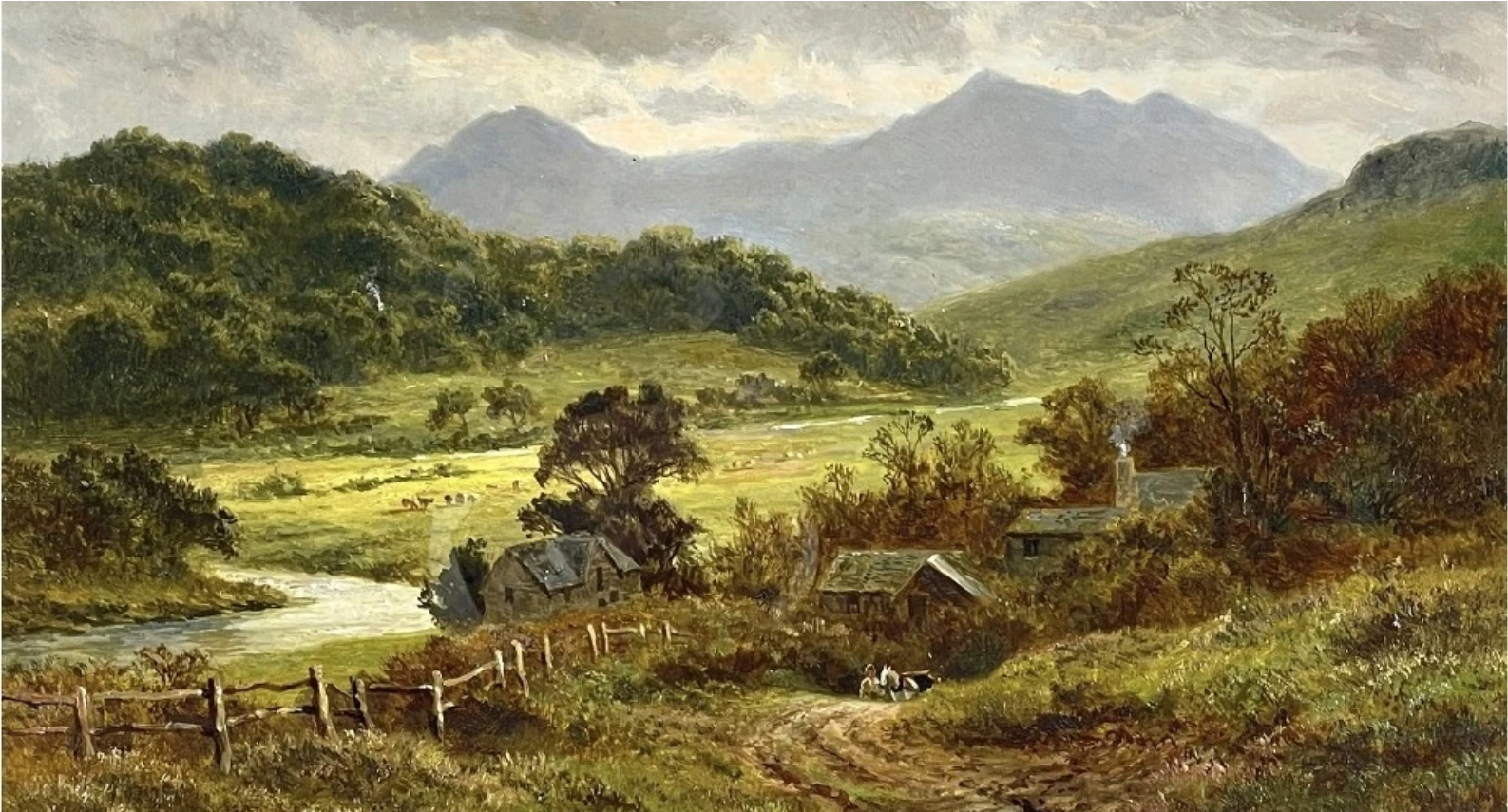
The Bell Curving Encounter Table
“You can tell you have reached civilization because you are standing on a street, and there is a beggar on it” — Archmage Hann, writing to a pupil whilst secure in his tenure
“Some describe the wilderness as a land with no law. I prefer to think of it as a place with fewer witnesses” — ‘Scarlet’ Findlayson, robber of the rich and occasional investor in smaller communities
“Not too much town, not too much mountains. Yeah, I like it here in the borderlands. You get all sorts — even had three bears move into the old cabin across the lake.” — Farmer Thrissell, interviewed during the search for a missing child.
For the purposes of this post, we’re going to talk about some very broad terms as a common shorthand for the areas your players might explore during a hexcrawl or other equivalent sandbox in need of an encounter table.
“Civilization” — There is a central authority (often oppressive) and a sedentary population producing sufficient excess to support non-subsistence occupations such as priest, merchant and landlord.
“Borderlands” — People work to gather natural resources (often traded with the nearest civilization) whilst living in smaller/less dense communities. These might be moved or rebuilt to respond to changing fortunes. There is also more space for wild creatures.
“Wilderness” — Very few permanent settlements due to a combination of unsuitable terrain, weather and other natural hazards. Vast spaces and limited knowledge of the inhabitants creates a vacuum for stories, myths and legends to arise in.
The goal here is to create a unified encounter table – one table that can be adapted to the changing geographic position of the party.
But first, a word about bell curves.
Bell Curves
Roll a single die, and you get an even distribution of results — each is just as likely as any other.
Roll two or more dice and total them gives you a bell curve distribution — some results are more likely than others. Furthermore the range of possible totals becomes larger. Let’s look at the classic example of 1d6, 2d6 and 3d6:

Lots of options to generate interesting results!
And those profiles remind me of something…
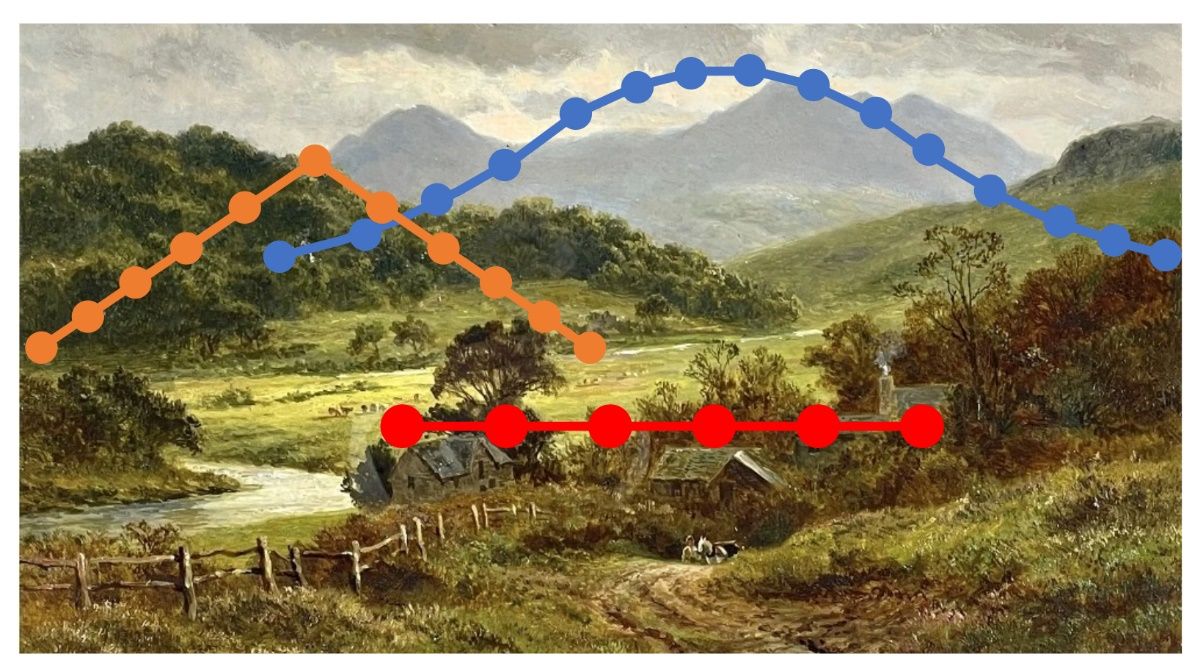
So, the genesis for a unified table:
Roll 1d6 when the party is close to civilization.
Roll 2d6 when the party is in the borderlands.
Roll 3d6 when the party ventures into the wilderness.
1d6 results will be evenly split, whereas the 2d6 and 3d6 table entries should reflect the relative likeliness/unlikeliness of results at the middle/ends of the spread.
Entries that “crossover” between the different distributions should reflect the fiction of why a creature might be in 2 or 3 different regions.
Example Table
A quintessential member of civilization (a noble, baffled and bewildered by a mundane task)
The backbone of civilization (a farmer, tired from driving sheep to market)
A product of civilization (giant rats, grown plump on an unguarded cornfield)
A beneficiary of civilization (a merchant, suspicious of armed adventurers)
A guardian of civilization (soldiers, asking for spurious fees and taxes to pass them)
An interloper from the borderlands (bandits, roaming for easy loot)
A beast wary of civilization (wolves, hunting isolated creatures)
A representative of the borderlands (foragers, using unusual traditions to avoid danger)
A borderlands scavenger (wyvern, hunting for carrion)
A roaming creature of the borderlands and wilderness (ogre, hungry)
A wilderness traveller (nomads, distinct from you with their mounts, weapons and culture)
A herald of the wilderness (harpies, luring with song into dangerous terrain)
A wilderness lurker (giant spider, waiting patiently in a web)
An exile from civilization (cultists, performing dark and forbidden rituals)
A wilderness predator (a chimera, feasting on a huge elk)
A wilderness legend (a giant, striding through the landscape with ease)
A sign of lost civilization (automaton, wandering with incomplete instruction)
A mythical creature of the wilderness (a dragon, searching for equally wondrous prey)
Further Experimentation
You could do one or more of the following:
Roll different dice sizes when the environment is ‘in flux’ (possibly due to player actions)
Create different tables for different regions
Create multiple entries, activities or motivations for the more likely results
Modify the reaction roll based on where a creature is from